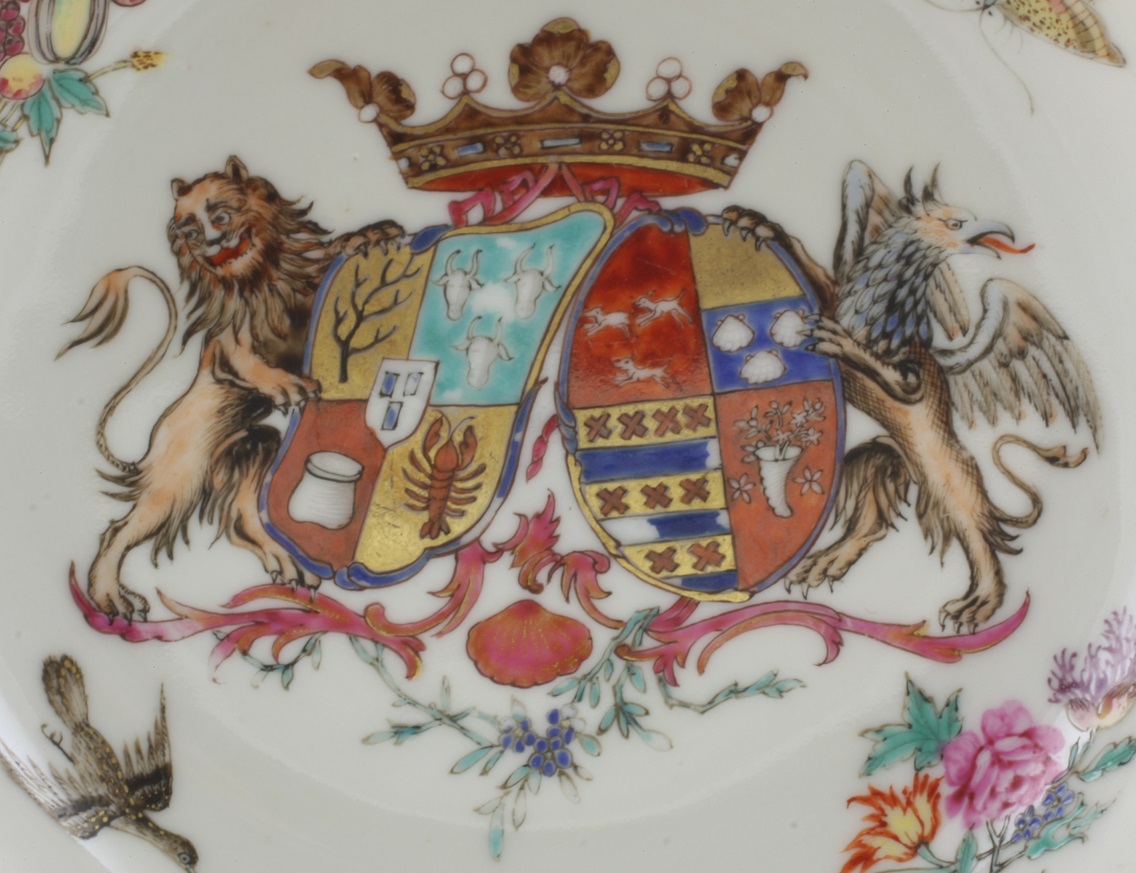
Sold Ceramics - Sold Chine de commande - Armorial / Pseudo-Armorial wares 1700-1800 - Armorial - Dutch - Page 1
Object 2012539
The coat of arms show in the centre of the saucer two large coats of arms accollé in rococo style. The dexster shield is asymmetrical: quarterly, 1. on a gold background a red withered branch, 2. on a green (correctly blue) background three white (silver) bulls' heads, 3. on a red background a (gold) bag or basket filled with (gold?) wheat, 4. on a gold background a red lobster; with a shield of pretence: three black cramps (two-one). These are the arms of Scholten with Aschat in a shield of pretence.
The sinister arms in an oval shield are also quarterly, 1. on a red background three gold weasels (two-one), 2. parted per fess, A. plain gold, B. on a blue background three silver shells (one-two), 3. on a blue background three gold bars charged with nine red saltires (four-three-one), 4. on a red background a gold or silver horn. These are the arms of Van Wesele, with Van Wesele in the first quarter, Fannius in the second, Van Persijn in the third and Guldewagen in the fourth quarter.
The shields are supported by a lion at the dexter and a griffin looking back at the sinister side both standing on a pedestal of scrolling leaves and branches together with a shell, with a gold coronet above.
This is the first service made for Christiaan Scholten (born Amsterdam, 13 June 1722; buried Amsterdam, 6 november 1799) and his wife Johanna Catharina van Wesele (1733-1781) whom he married in The Hague on 22 or 23 December 1750. On the occasion of their silver wedding anniversary in 1775 they ordered a second tea service decorated in underglaze blue. The arms on the services are different: this one is having a coronet and a different design of pedestal and here the Scholten arms have different shield of pretence. The three cramps are the manorial arms of Aschat which Christiaan wasn't entitled to bear until his father's death in 1722.


 create websites
create websites